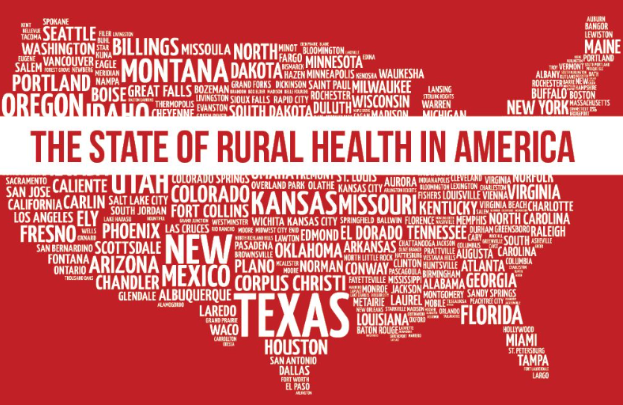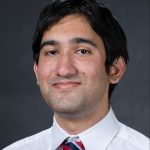SA: In my last piece, the main topic was the role of PAs (physician assistants) in addressing the physician shortage. You contacted me with some points regarding the scope of a PA’s work and how PAs could tie into the physician shortage in rural areas in particular. Do you mind sharing your thoughts?
Dr. C: I should disclose that I am one of the medical directors of the NAU PA program, and I have immense respect for Advanced Practice Providers (APPs), which includes PAs and Nurse Practitioners. There is absolutely a need for rural physicians, PAs, and NPs in an interprofessional environment to address community needs. In low-resource areas where physician scarcity is more acute, we see greater numbers of APPs providing essential healthcare. The problem is with our health system. Primary Care Physicians (PCPs) – family physicians, general pediatricians, and general internists – should be the foundation on which the rest of the healthcare system is built. Where there are greater concentrations of primary care doctors, quality and cost of care are better. Currently, we are in the opposite situation: care is sub-specialist driven. Part of the problem is that medical schools, including UA COM-P, produce very few primary care doctors. It starts with admitted students having other specialty interests, perhaps in higher paying specialties, and continues in a medical culture that devalues preventive and holistic approaches to healthcare. Faculty and staff are working to turn this around, but it still is not nearly enough – our numbers are no better than most institutions.
SA: What kinds of special efforts are being made to turn this around?
Dr. C: The Primary Care Scholarship, Rural LIC, and Certificates of Distinction (CODs) in Rural Health, Service Learning, and Primary Care give students early exposure to primary care.
By 2030, we are expecting a deficit of 1940 PCPs in Arizona. Osteopathic colleges in Arizona produce greater numbers of PCPs, and a possible reason is that the curricula are designed with an orientation toward primary care. AT still places Year 2 students in Community Health Centers for early exposure and clinical training. Additionally, our selection process and other allopathic schools’ processes may favor candidates who are already inclined towards specialty work. I hope to mentor a Scholarly Project with a student to determine to what extent the scribe experience in departments such as the ED (emergency department) is valued by admissions committees. If a large portion of our applicant class enters school with that experience, they may already have formative experiences that push them towards that specialty. BUMCP has come up with a PCP scribe program that trains pre-meds in Banner primary care clinics, and efforts like that may be beneficial to counteracting this potential issue.
SA: That’s definitely an interesting perspective; I can say one of my personal specialty interests is Orthopedics, and I spent time as a scribe for that specialty in my gap year. I actually never saw any postings for primary care scribe positions during my job searches, now that I think about it.
Dr. C: I think that is a good example of the problem. As a society, we generally de-value primary care. Some of the lowest paid specialties are General Pediatrics, Family Medicine, and General Internal Medicine. In academic settings, an implied hierarchy favors sub-specialists; this may be related to obtaining specialized NIH funds and grants. As a society, we favor the reductionists (subspecialists) over the systems (primary care) – in my view, we need many more systems thinkers in medicine.
Let me tell you why I value primary care: the emphasis is on the health of the patient as opposed to the organ or organ system. More focus is placed on engagement with patients in the context of families and communities and also in providing longitudinal care. In primary care, we can focus on knowing patients while understanding the social determinants that directly impact their health. After family medicine residency, I started work in the small town where I went to high school and assumed care for a community of patients for 13 years. The setting fostered trust and helped communication. I could advocate for appropriate treatment plans based on specific life circumstances. I was happy in that kind of physician-patient relationship, knowing that I could improve medical outcomes and even help improve other life circumstances. Regions where there is a scarcity of primary physicians and an excess of sub-specialists correlate with more expensive care and worse health outcomes. When you work in primary care specialties, you begin to see why that is.
SA: It’s interesting that in certain places, you can go straight to a specialist for medical conditions rather than getting referred after assessment by a primary physician.
Dr. C: It’s an important point, and another thing I think that relates to is the amount of unnecessary and expensive medical testing routinely ordered in the United States. When patients enter the complex and fragmented health care system by self-referring to a sub specialist, they may be putting themselves at a serious disadvantage. Why wouldn’t you want a physician to be your advocate, ensuring you get appropriate care from the right specialist for the right diagnosis? That’s one of the important services you get with a Family Physician, General Internist, or General Pediatrician.
SA: Just to quickly touch on it, I know you spend a lot of time advocating for rural health reform. Can you touch on how these issues play into rural health?
Dr. C: I believe family medicine is especially valuable in underserved settings, and rural settings fall into that category. Imagine having to drive two hours to the big city to get care; you have limited income and gas prices are absurdly high. One full spectrum family physician can take care of everyone in that setting. Our colleagues in northernmost Arizona provide prenatal care, attend normal deliveries, and go to c-section when medically necessary. They take care of the newborns in the nursery and follow the developing child through a series of well child checks. Screenings for development and vaccinations are reviewed and administered. Mom is screened for postpartum depression, and problems at home including screening for domestic violence are prioritized. When the medical community requires call coverage, just one doctor, a family physician, is able to cover all of the services.
A scarcity of family physicians is creating problems: maternity care deserts in Arizona and other states can be especially problematic. As a patient approaches their due date, they have to decide what to do if they live far from a hospital that provides maternity services. What if they don’t have the resources to move to the big city in their last weeks of pregnancy? That is the dilemma many are facing. It is why Family Medicine Chair Sharry Veres and I are working to develop rural family medicine residencies. Training physicians in the medical setting where they will practice will ensure physicians have the skills they need. This concept applies equally well to rural surgical training, where confidence in a wide breadth of skills is required for practice.
Healthcare outcomes in rural areas are generally worse, with lower life expectancies in a range of chronic conditions. We can turn that around by admitting students whose aim is rural practice, supporting them in medical school, and assuring they have residencies in Arizona that can further advance their professional development..
SA: One last thing: you’ve told me a lot about rural care. I know lots of students in the class are interested in rural health and primary care, but not necessarily enough to participate in something like the Primary Care Scholar Program, which I believe requires committing to the specialty early on. Do you have advice for students who may want to get more involved and spend time just trying out rural or primary care without committing to a longitudinal program?
Dr. C: You don’t have to wait for clerkships to learn about primary care! We have opportunities in PAL Block and since many primary care faculty work at COM-P, they are accessible to answer questions. The Primary Care Scholars COD, Service Learning COD, and Rural COD are programs that help with understanding the role of primary care. I’m happy to answer questions myself. We have primary care advocacy groups and various COD seminars on the topic that anyone can attend regardless of membership (pay attention to email announcements). Don’t forget that rural block rotations and extended rural COD placements are available across diverse communities, from historic mining towns to Native, border, and mountain communities. Funds support added travel and living expenses that students might incur. The dedication of rural physicians to their communities is impressive. Students get great preparation for whatever specialty they then choose to pursue.
SA: Any final thoughts?
Dr. C: Getting back to the conversation about physicians and advanced practice providers, the relationships are framed at times in an adversarial way. I believe we need rural providers of all stripes, working in collaboration, to get health care where it is needed. Interprofessional teams, working together to meet community needs: that is what we should strive for. Regarding our medical school, I want to make sure UA-COMP prioritizes primary care. It’s vitally important to all people in all regions of Arizona.
Salman Azfar is a fourth year student at the University of Arizona, College of Medicine Phoenix. He graduated from UCLA in 2020 with a degree in Physiological Science. He loves dodgeball, swimming, playing games, and spending time with his friends and family. He can be reached at smazfar@arizona.edu.


